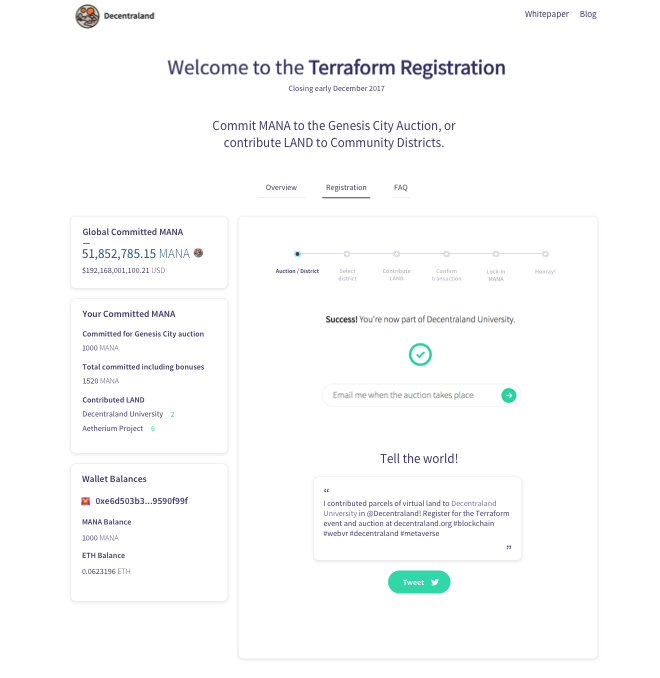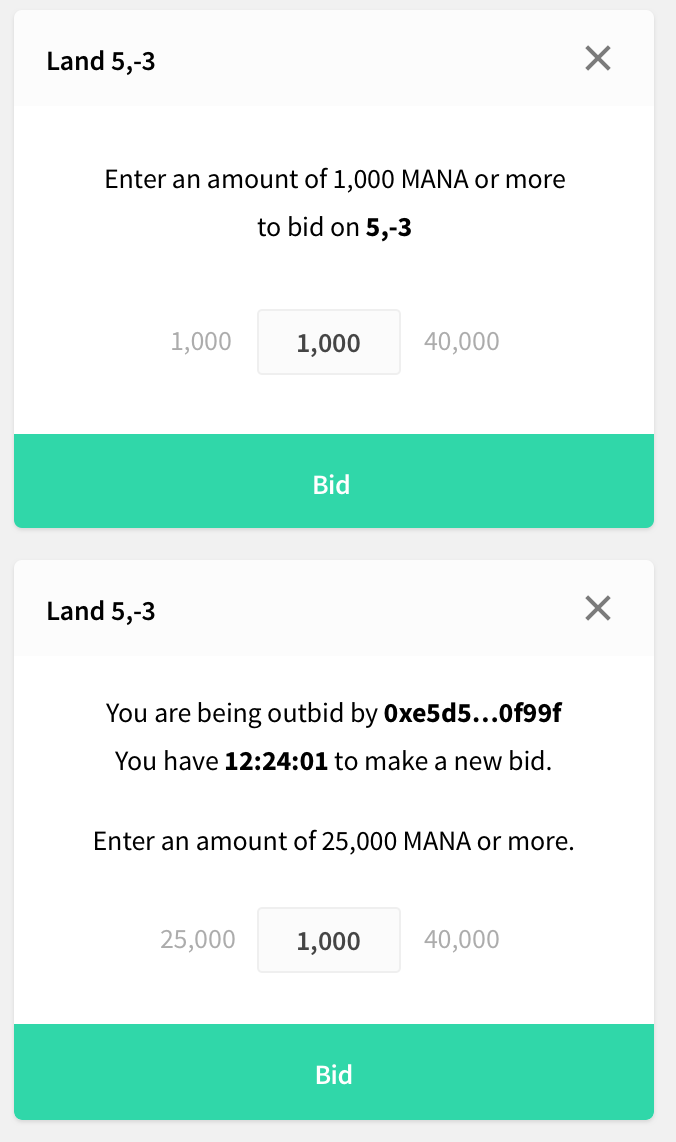Terraform auction
Two-stage land auction for a virtual reality world
Summary
The Terraform auction was a web application allowing any user to stake and use funds in a two-week auction of virtual land in Genesis City, Decentraland’s world. Users committed funds before the opening of the auction. Once the auction opened, users could bid on any number of parcels in the world through a top-down map interface. Once the auction closed, Decentraland distributed the non-fungible LAND tokens to the winners.
90,000 parcels were sold.
- My role: product designer
- Team: myself, CEO, CTO, 2x engineers, community manager
Context
I was hired as the product designer a month before launch. During this time, I tested and iterated upon the pre-auction staking flow, designed and tested the auction interface, designed a social loop into the auction product, and designed various marketing views to highlight community contributions.
In the end, the Terraform auction was the largest auction of virtual land of all time at about $24m USD on Ethereum. The auction interface laid the groundwork for the subsequent marketplace product that became the largest digital goods marketplace on any blockchain.
This work happened in tandem with the Genesis City urban planning. You can read my writeup of that process here.
Staking flow
Immediately upon joining the team I began testing the existing prototype app with users from the community.
User tests revealed two big needs:
- Education and onboarding needed to be improved—people weren’t sure how to participate in the auction
- Users didn't know community-led districts were fundraising or how to contribute to such efforts
I solved these by designing a segmented, branching staking wizard, writing and testing UX copy, and highlighting community district contributions on the project homepage.



Auction product

The map view covered the following stories:
- Navigate the map and distinguish between roads, plazas, district parcels, borders, and open parcels
- Make and track bids in real time
- See and evaluate bid activity as a heatmap
- Be notified when a bid is outbid or extended
- See my token balances and commitments

In the final auction interface design, existing bids and notification preferences are tracked in a collapsible pane on the left, while new bids are made directly on the map interface via modals and metadata is presented in hover tags.

Product legacy
After the auction, this product became the “Atlas” view for the Decentraland Marketplace, defining a design pattern for all following world-based blockchain games where a world map acts as a hub with drilldowns into listing and market views. The pattern has been adopted by CryptoVoxels, Sandbox, and the spread of virtual world mapping products in the space.
